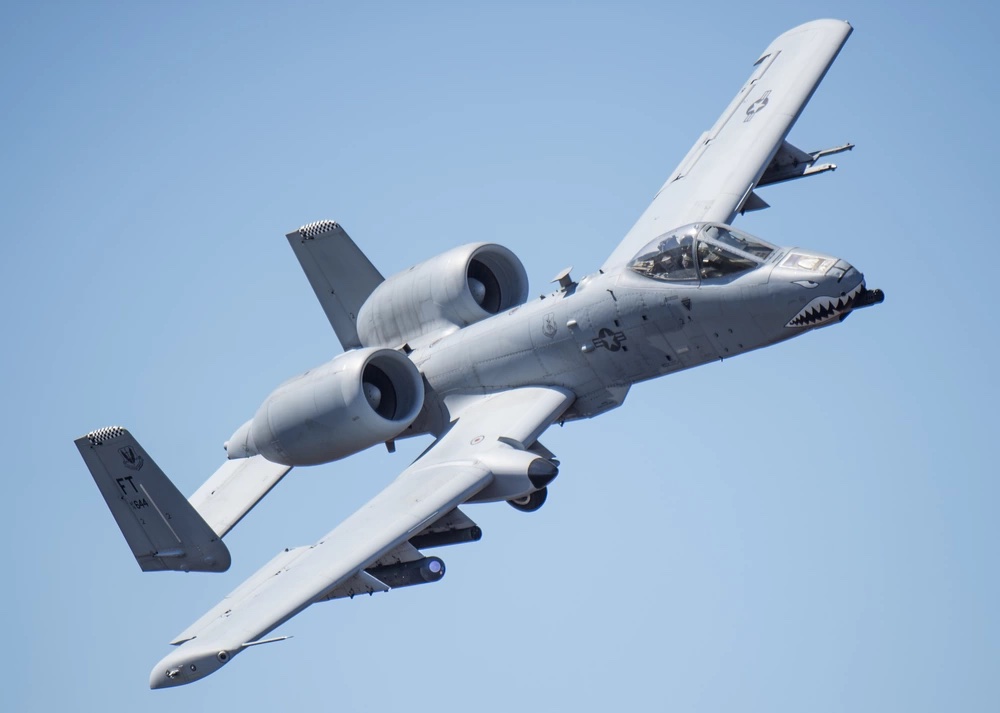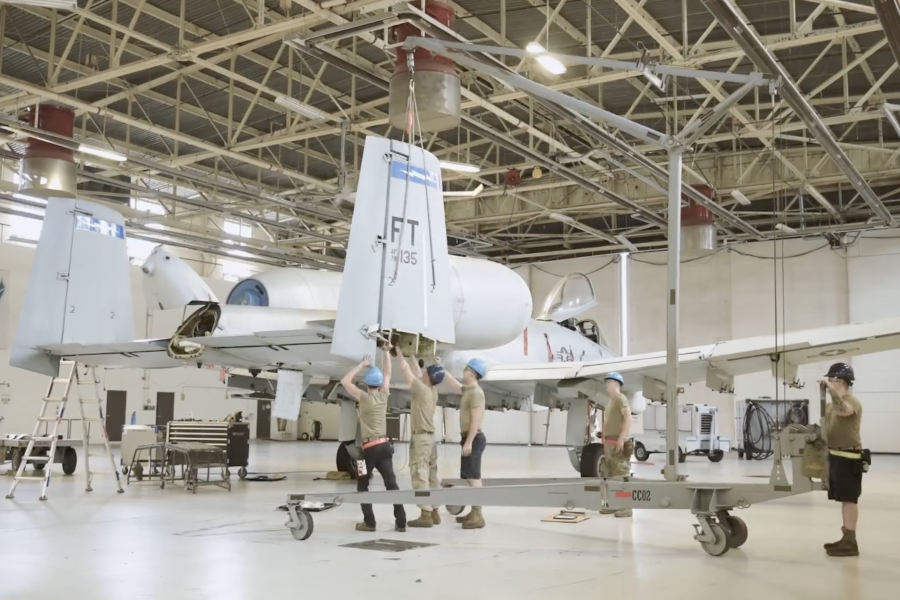The A-10’s time at Moody Air Force Base, Ga., may be drawing to a close—with a final departure date projected in 2028—but in the meantime, the base’s maintainers are pushing hard to keep the legendary close air support aircraft flying, even one that had been tabbed for a premature retirement to “The Boneyard.”
Over the course of 14 duty days from Aug. 2-22, Airmen from the 23rd Maintenance Group spent about 290 man-hours performing a roughly 350-step operation to save the A-10 in question, tail number 79-0193.
A structural rib on the aircraft’s horizontal stabilizer was severely damaged by a May 30 midflight bird strike, leading Air Force engineers to declare the jet unfit for flight, the Group said in a statement sent to Air & Space Forces Magazine.
Maintainers were able to bring the aircraft back by swapping tail sections with a different A-10 at Moody, number 79-0135, that was already grounded due to a previous condition and being used as a munitions and maintenance training aid.
A repair of that size is usually performed at the A-10 maintenance depot at Hill Air Force Base, Utah, but engineers there gave Moody’s 74th Fighter Generation Squadron and the 23rd Maintenance Squadron special permission and guidance to get it done in Georgia.
The tail swap required Airmen to disconnect wires, hydraulic actuators, and flight control cable assemblies; hook and hoist the vertical and horizontal stabilizers with a crane; and perform about 60 electrical, hydraulic, and flight surface rigging checks to make sure the swap was successful.
It was the first tail replacement performed at Moody since 2008, and it may have saved both jets from the 309th Aerospace Maintenance and Regeneration Group (AMARG), the Boneyard in the Arizona desert where decommissioned U.S. military aircraft are stored.
“If not for the repair, both 79-0193 and 79-0135 would have been decommissioned (divested) and sent to the boneyard (AMARG),” a 23rd Maintenance Group spokesperson said in a statement. “This repair allowed 79-0193 to get back into the fight and increase aircraft availability.”
The jet is not out of the woods yet; before it can return to operational status, it must pass a Functional Check Flight, where an experienced pilot flies the jet to make sure its systems are in working order. Moody will continues to use the 79-0135 aircraft for munitions and maintenance training until it receives further guidance from higher headquarters.
Still, the potential return of a A-10 is a major accomplishment for crews at Moody, who have to perform large maintenance operations like this more frequently as the fleet ages.
“As the years go by, we are starting to see more issues arise, and work diligently to schedule down time to work through major inspections and rebuilds as the need arises,” the 23rd Maintenance Group said.
While Air Force leaders are actively planning the final stages of the A-10’s service life, pilots and maintainers in the field need to keep the aircraft flying for at least a few more years. Doing so is no small feat and extends beyond the tail replacement at Moody. More than a decade ago, the Air Force started the process of replacing the wings on all of its A-10s. Some at Moody are still waiting for the upgrade.

This June, the Air Force announced Moody will replace its A-10s with two squadrons of F-35A Lightning II fighters starting in fiscal 2029, pending environmental impact assessments. Congress approved the service’s request to cut 42 A-10s across the fleet in fiscal 2024, including six at Moody. The service plans to retire the other 48 at Moody through fiscal 2028.
